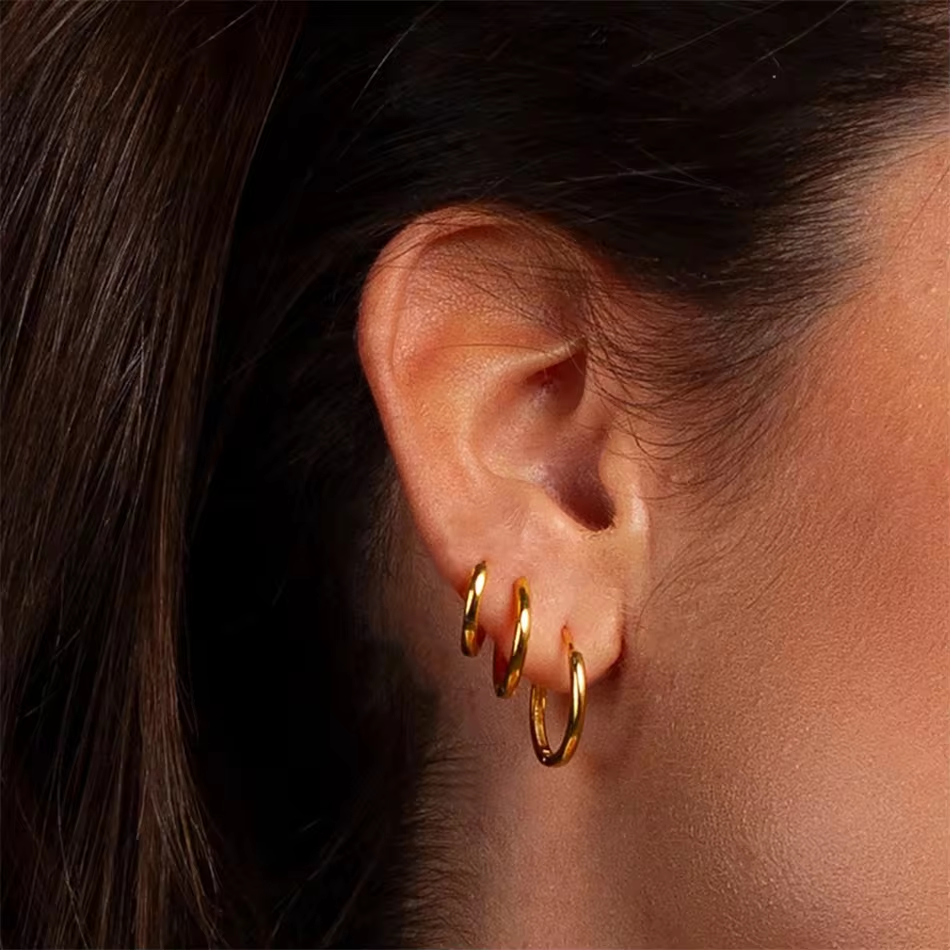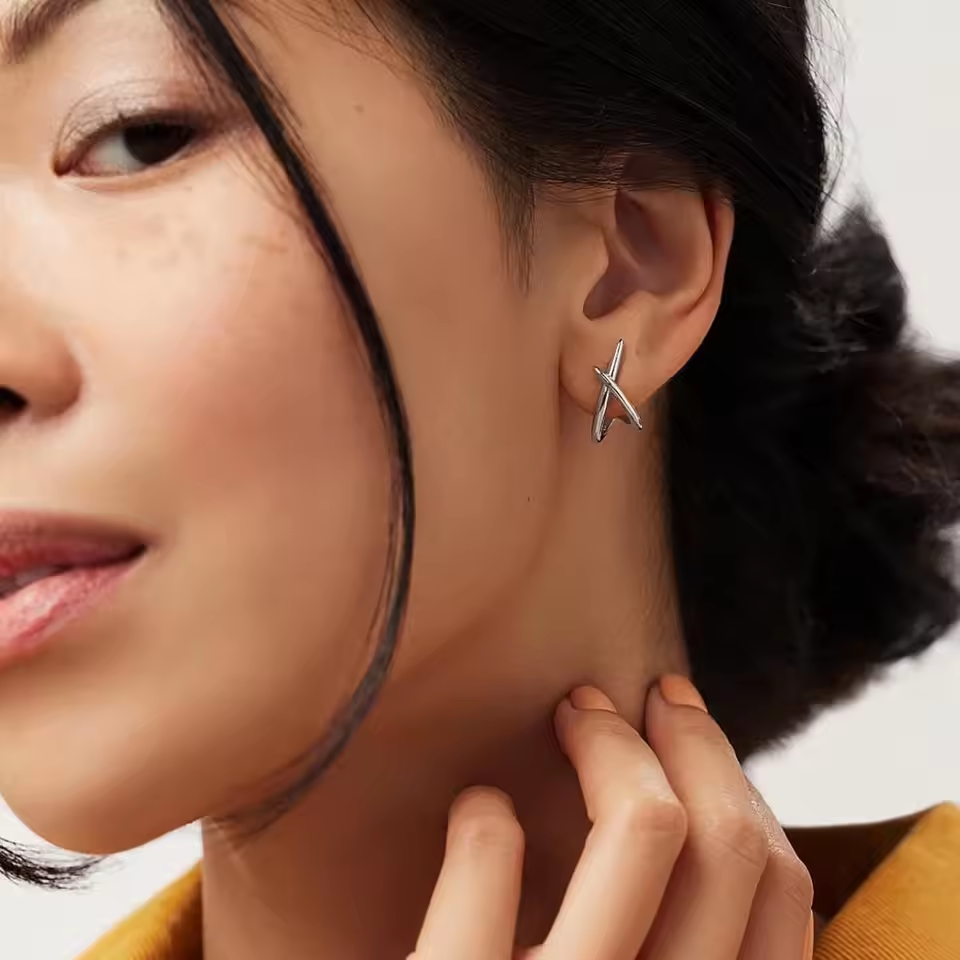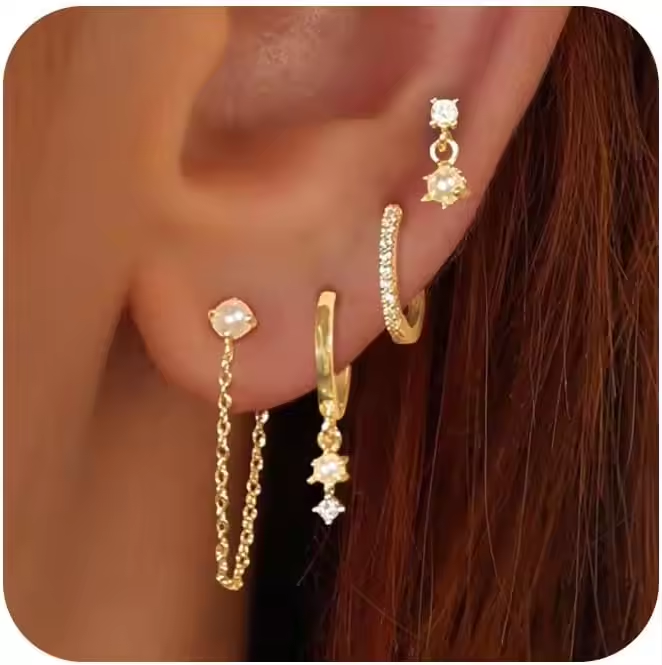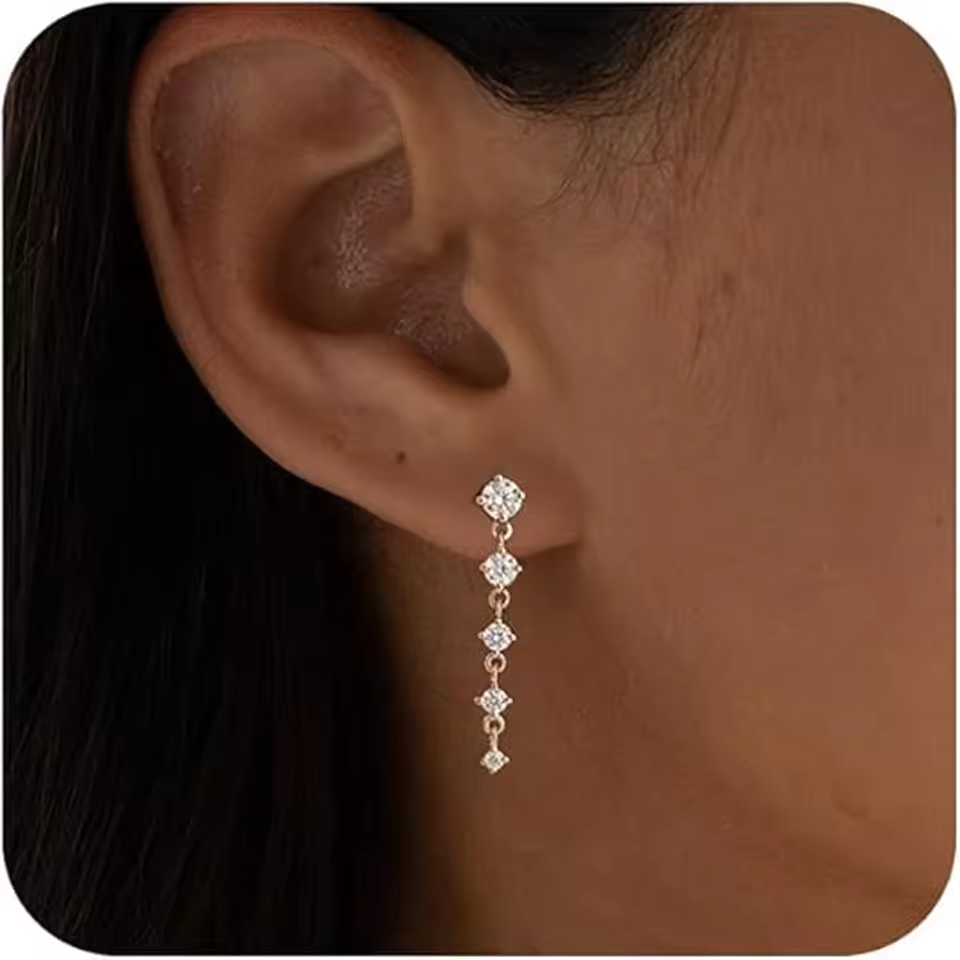Introduction to Hypoallergenic Earrings
Hypoallergenic earrings are a game-changer for individuals with sensitive ears, offering a balance between fashion and safety. These earrings are designed to minimize allergic reactions caused by common metals like nickel, which often triggers rashes, redness, or itching. The term “hypoallergenic” itself means “below normal” in terms of causing an allergic reaction, making these earrings ideal for those with delicate skin or new piercings.
One of the key reasons hypoallergenic earrings dominate the jewelry market is their versatility. They come in countless styles, from minimalist studs to bold hoop designs, ensuring there’s an option for every aesthetic preference. However, not all earrings labeled as “hypoallergenic” are created equal. Consumers must understand the materials used and the certifications behind these claims to avoid disappointment.
The rise of social media and influencer culture has amplified demand for stylish yet safe jewelry. Platforms like Instagram and Pinterest are flooded with posts showcasing trendy hypoallergenic earrings, proving that comfort and fashion can coexist. This article will delve into how to select the best hypoallergenic earrings, their benefits, and how to care for them to extend their lifespan.
Why Hypoallergenic Matters for Ear Health
Allergic reactions to earrings are alarmingly common, affecting millions worldwide. Nickel, a metal often used in cheaper jewelry, is the primary culprit behind contact dermatitis, a condition marked by itchy, inflamed skin. For people with new piercings, the risk is even higher since the skin is still healing. Hypoallergenic earrings eliminate this risk by using metals that are less likely to cause irritation.
Consider this: a 2022 study by the American Contact Dermatitis Society found that 18% of the population has a nickel allergy. For these individuals, investing in hypoallergenic earrings isn’t just a lifestyle choice—it’s a necessity. Even those without diagnosed allergies benefit from these earrings, as they reduce the likelihood of discomfort during long wear.
Moreover, hypoallergenic options are critical for occupational settings. Nurses, teachers, and others who wear earrings daily need jewelry that doesn’t cause workplace distractions. Parents of children with sensitive skin also rely on these earrings to avoid painful reactions during playtime.
Materials That Make Hypoallergenic Earrings Safe
The safety of hypoallergenic earrings hinges on the materials used. Here are the top three materials to look for:
A. Titanium
Titanium is lightweight, durable, and completely hypoallergenic. It’s often used in medical implants, which speaks to its biocompatibility. Titanium earrings are ideal for fresh piercings and come in sleek, modern designs.
B. Sterling Silver
Sterling silver (92.5% pure silver) is another safe option. However, it requires regular polishing to prevent tarnishing. Opt for earrings with rhodium plating to enhance durability and shine.
C. 14K or 18K Gold
Gold alloys are less likely to cause allergies than base metals. Ensure the gold is at least 14K to balance purity and strength. For a budget-friendly alternative, look for gold-plated earrings made with a hypoallergenic base metal like surgical stainless steel.
Avoid earrings labeled “gold-colored” or “silver-colored,” as these often contain nickel. Always check for certifications like the “hypoallergenic” label from the International Organization for Standardization (ISO).
Choosing the Right Style for Your Lifestyle
Selecting hypoallergenic earrings that align with your daily activities ensures both comfort and style. Here’s how to choose based on your lifestyle:
For Active Lifestyles: Opt for lightweight, secure designs like studs or small hoops. Titanium or stainless steel posts resist sweat corrosion and stay put during workouts. Avoid dangling styles to prevent snagging.
Professional Settings: Prioritize subtle elegance. Delicate studs, tiny pearls, or minimalist drops in neutral tones (gold, silver) pair well with formal attire. Ensure closures are discreet to avoid workplace hazards.
Fashion Enthusiasts: Experiment with bold trends—geometric shapes, statement hoops, or layered designs. Choose hypoallergenic bases (e.g., titanium) even for trendy styles like black earrings. Seasonal trends (e.g., summer wirework, winter metallics) add flair without compromising safety.
New Piercings: Use simple posts made from titanium or surgical steel for 6–8 weeks. Avoid large or dangling earrings to prevent irritation. Transition to preferred styles once healed.
Additional Tips:
- Occupational Needs: Healthcare workers may need non-removable or minimalist styles for safety.
- Budget-Friendly Options: Gold-plated or plated titanium earrings let you try trends affordably.
- Occasional Wear: Glamorous options like chandelier earrings are safe for special events if materials are certified hypoallergenic.
By matching style to your lifestyle, you ensure earrings are both functional and fashionable—perfect for every occasion.
Care and Maintenance Tips
Proper care ensures your hypoallergenic earrings remain safe, shiny, and irritation-free for years. Neglecting maintenance can lead to tarnishing, bacterial buildup, or even allergic reactions. Below are actionable steps to keep your jewelry in optimal condition:
Daily Care Essentials:
After each wear, gently wipe your earrings with a soft, lint-free cloth to remove oils, sweat, or makeup residue. This prevents grime from settling into crevices.
Weekly Deep Cleaning:
Once a week, clean your earrings with a mild soap solution. Mix a drop of gentle dish soap with warm water, then soak the earrings for 5–10 minutes. Use a soft-bristled toothbrush to gently scrub intricate details, like gemstone settings or engraved patterns. Rinse thoroughly and pat dry with a clean cloth. For tarnish-resistant metals like sterling silver, consider a polishing cloth to restore shine without harsh chemicals.
Special Care for Sensitive Skin:
If you have highly sensitive skin, disinfect earrings monthly with isopropyl alcohol. Soak them for 10 minutes, then rinse and dry. This kills bacteria that might cause irritation. Avoid abrasive cleaners or ultrasonic cleaners, as they can wear down hypoallergenic platings.
Problem-Solving Tips:
- Stubborn Stains: For mineral deposits (common in pool-swimmers), mix baking soda and water into a paste, apply it to the earrings, and scrub gently.
- Loose Backs: Tighten screw closures regularly to prevent loss. For friction-fit backs, ensure they’re snug but not overcompressed.
- Gemstone Care: For earrings with stones (e.g., cubic zirconia), avoid steam or extreme heat, which can loosen settings.
Storage Hacks:
Invest in a small jewelry organizer or individual ziplock bags to keep earrings separated. This prevents scratching and makes it easier to find pairs quickly. For travel, use a padded pouch to protect them from jostling in luggage.
By following these steps, your hypoallergenic earrings will stay safe to wear and visually appealing, ensuring they remain a trusted part of your jewelry collection.
Common Myths and Misconceptions
Hypoallergenic earrings are often misunderstood. Here are three key myths to avoid:
“All silver earrings are hypoallergenic.”
Fact: Only sterling silver (92.5% pure) or silver plated over hypoallergenic bases is safe. Cheap “silver-colored” jewelry often contains nickel, causing irritation.
“Hypoallergenic means ‘nickel-free.'”
Fact: While most hypoallergenic earrings exclude nickel, the term isn’t legally regulated. Always check material labels—opt for titanium, surgical steel, or certified sterling silver.
“Once healed, piercings don’t need hypoallergenic earrings.”
Fact: Even healed ears can react to low-quality metals. Always prioritize hypoallergenic materials to prevent unexpected irritation.
Avoid generic terms like “gold-colored” and prioritize certifications (e.g., ISO hypoallergenic labels). Knowledge ensures safety without sacrificing style.
Trends in Hypoallergenic Jewelry Design
Hypoallergenic jewelry is evolving with modern innovation and sustainability. Key trends include:
Sustainable Materials: Brands now use eco-friendly metals like recycled titanium or lab-grown gemstones to reduce environmental impact.
Customization: 3D printing enables personalized designs—think engraved initials or bespoke shapes—while maintaining hypoallergenic safety.
Tech Integration: Smart earrings with sensors (e.g., UV exposure trackers) or vibration alerts for notifications blend functionality with style.
These trends prioritize both ethical practices and user needs, proving hypoallergenic jewelry can be avant-garde and responsible.
Conclusion
Hypoallergenic earrings are more than a practical choice—they represent a commitment to health, style, and innovation. By prioritizing materials like titanium, surgical steel, or certified sterling silver, you safeguard your ears from irritation while enjoying versatile designs. Proper care, such as regular cleaning and storage, ensures longevity, turning these pieces into timeless investments.
Emerging trends like sustainable materials and customizable tech-infused jewelry highlight how hypoallergenic options are evolving to meet modern demands. Whether for daily wear, professional settings, or special occasions, these earrings prove that safety and fashion need not be mutually exclusive.
Remember: a well-chosen pair adapts to your lifestyle, from workouts to formal events, while respecting your skin’s sensitivity. As the market grows, staying informed about certifications and innovations empowers you to make choices that align with your values.
In short, hypoallergenic earrings are not just jewelry—they’re a bridge between self-care and self-expression. Embrace them confidently, and let your ears shine as brightly as your personal style.